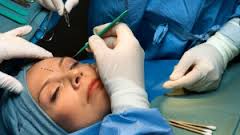Craniofacial Surgery

Craniofacial surgery is a surgical subspecialty of maxillofacial surgery that deals
with congenital and acquired deformities of the skull, face, and jaws bone, skin,
muscle, teeth, etc. Craniofacial surgery does not, however, include surgery of the
brain or eye.
typically treated by craniofacial surgeons include craniosynostosis (isolated and
syndromic), rare craniofacial clefts, acute and chronic sequellae of facial fractures,
cleft lip and palate, micrognathia, Treacher Collins Syndrome, Apert's Syndrome,
Crouzon's Syndrome, hemifacial microsomia and many others.